Yom Kippur: Unity – Part 2
In part two of this three-part series entitled, Yom Kippur: Unity, we will examine artifacts relating to the shofar and Torah. We will see how they display the Jewish people’s close connection to God, as well as the unity seen among God’s people.
Symbols Found in Archaeology and History:
In part one of this three-part series, we looked at the Holy Day known as Yom Kippur, as well as symbols related to it. The two most commonly used symbols for Yom Kippur found in the archaeological and historical record that we will examine being, the shofar, and the Torah…

The Shofar:
The importance of the shofar in Jewish culture in the land of Israel is seen not only in artifacts found within Jerusalem—such as the Temple Mount parapet stone examined in part one of this series—but also, throughout various synagogues dotting Israel. The image of the shofar having been used to adorn Torah scrolls, walls, and even floors in the form of mosaics, as seen below… is a constant reminder to the Rabbi and all who entered of the importance of the shofar in terms of holiness and as a reminder of man’s connection with God. For
when God breathed life into man the soul was brought into being, and the symbolic cry of that moment is uttered through the breath of man sounding the shofar. This connection with God and creation is one of the many reasons we see the shofar throughout the Jewish archaeological record.
Yet, while Israel has the oldest and largest collection of archaeological finds originating from the Jewish people, going easily back to the First Temple period, other countries around the world have also felt the influx of Jewish artifacts over the centuries that have passed.
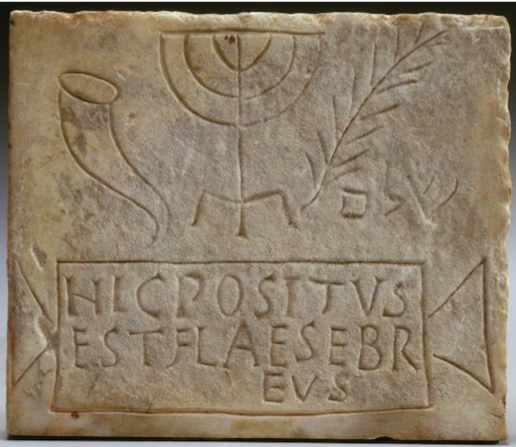
The burial plaque shown below originates from Venosa, Italy, a city over 1,000 miles from Jerusalem. Yet, in such a distant land we find evidence of a Jewish population—likely due to extended Roman occupation of Israel which culminated in the destruction of the Second Temple. However, not only was there a Jewish population in Italy, there was a Jewish population that, despite the trials they had faced, we’re still focused on God. Specifically, we find, that in the case of this burial plaque, there is a shofar, menorah, and palm—Holy symbols of faith, love, and loyalty to God. Symbols important enough for the Jewish population to use not only in life but also in death.

Still, even in years not so long past, the Jewish people have left their mark upon the world, not only by what they have done but by the items they have left behind. The shofar pictured above was made in 1943 by Moshe Winterter (Ben-Dov); yet, why is such a relatively new artifact important?
Well, the shofar was crafted by Moshe Winterter (Ben-Dov) in a forced labor camp in Poland, known as Skarżysko-Kamienna. Moshe, in 1943, was approached by Rabbi Yitzhak Finkler to make the shofar for the upcoming new year. At first, Moshe refused… to be caught would mean death. Eventually, he agreed, and by Rosh Hashanah, the shofar was completed, but only after many attempts to bribe a guard to bring a ram’s horn suitable for the Holy task it was to perform. The Jewish inmates gathered together to hear the shofar blast—a sound most Holy.
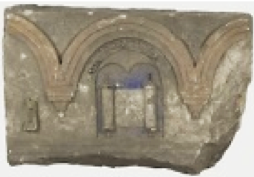
The Torah:
While the shofar is one of the more common symbols of Yom Kippur and is often found in the archaeological record, the Torah is just as important, if not more so. The Torah is God’s Word—it is law, it is life, and it guides the lives of those who follow it. God’s Word is the instruction for the observance, not only of the Ten Commandments but of the Lord’s Feasts and holy days such as Yom Kippur.
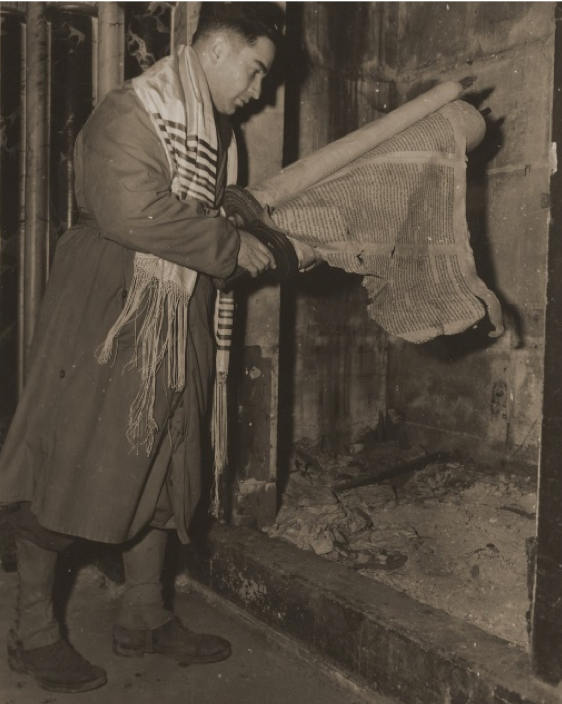
For these reasons and more, the Torah is commonly found depicted on everything from Temple items to Jewish cemetery carvings, such as the one shown below. This tattered and virtually worthless—monetarily—stone, comes from a Jewish gravesite in Turek, Poland, that had presumably been standing since the late 1800’s with only minor wear. A number of tombstones such as this one from the desecrated
Turek Jewish cemetery was broken and used as paving stones for the courtyard of the local Third Reich headquarters, ‘Organization Todt.’
This piece of the tombstone installed in the late 1800’s indicated that the person buried there was a reader and lover of Torah; the Torah having traversed thousands of miles to be read in Poland by Jews who loved God. The importance of the Torah is evident by the reverent display for one who loved and held regard for God’s Word.
“Hear the word of the Lord, O house of Jacob and all the families of the house of Israel.”—Jeremiah 2:4
Still, the Torah is not mere carven images. No, many are made of parchment and ink—one example is shown right. This Torah was desecrated by the Nazi’s before the end of 1944, along with the synagogue it resided in. The Jewish community would have, according to their reverence for the Word, always kept the Torah protected by a cloth covering when not in use and placed it within a cabinet—ark—especially made for it. They would never have allowed God’s Word to be misused had they the power to stop it. God’s Word being loved by the Jewish people the world over.
Sometimes, as shown above, right, Torah scrolls were simply stolen for research by the Nazis into ‘The Jewish Question.’ Other times, as shown below, God’s Word was misused in an industry—as lining, purses, wallets, toys, insulation, etc. The Torah, which was loved and never disrespected by Abraham’s children, was continually misused by those who did not understand the importance of the Word nor the Jewish roots of the faith.
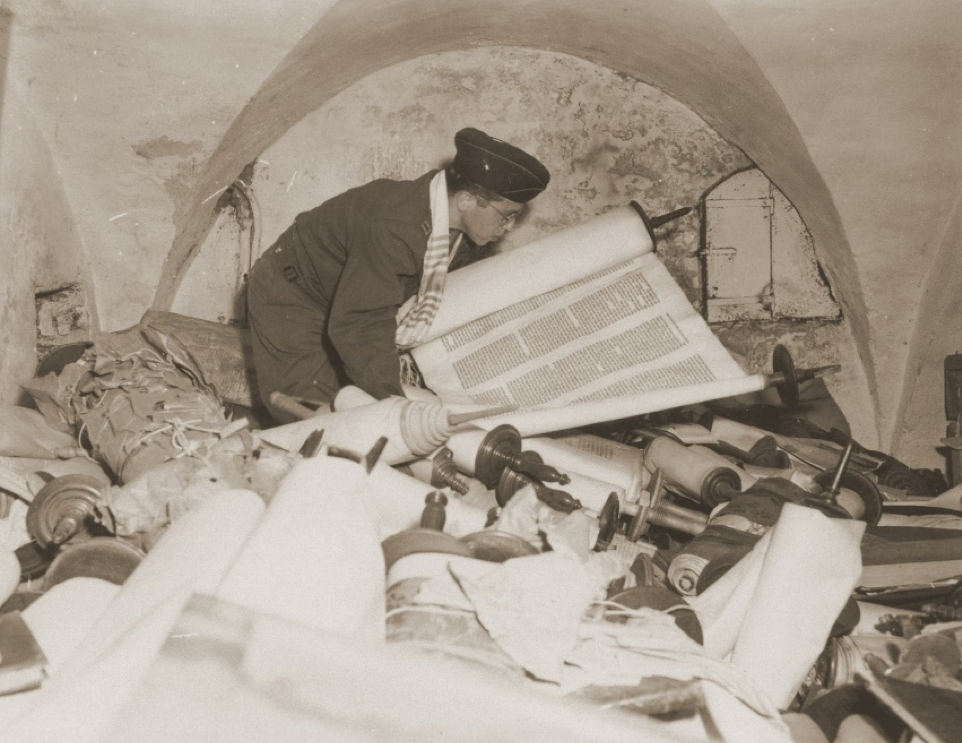
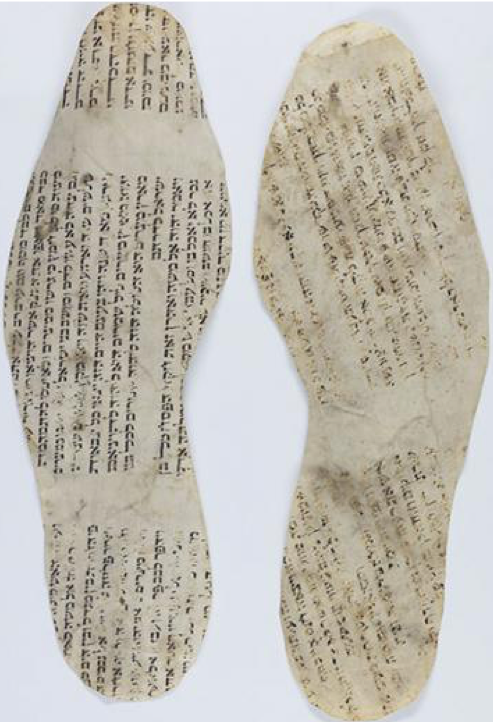
Yet, while many artifacts are seemingly humble, others are not. Such as the golden medallion found at the southern wall of the Temple Mount in Jerusalem…
In the final part of this three-part series entitled, Yom Kippur: Unity, we will continue to examine artifacts to gain a fuller picture of Yom Kippur and the Jewish roots of the faith. We will discover how Yom Kippur brings unity to the Jewish community. And finally, we will discover how Gentile Believers can benefit from the lessons our Jewish brothers and sisters have taught and continue to teach us… as well as the benefits of the Jewish and Christian faiths being brought together.
